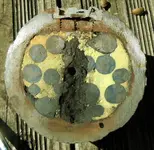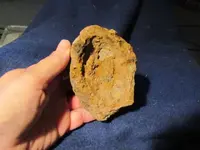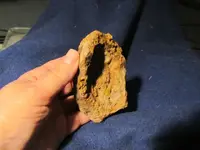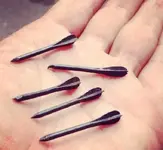Photo attachment didn't post, so I fixed that.
It appears to be a fragment of an exploded cannonball. The thickness and width measurements you provided indicate it was part of a 12-Pounder (4.62"-caliber) Case-Shot (antipersonnel) shell. Along with its internal gunpowder charge, that type of exploding cannonball contained about eighty .65"-diameter lead (or iron) balls, intended to increase the casualties caused by the fragments of its iron body.
I should mention, there was another type of 4.62"-caliber exploding cannonball, which contained only gunpowder (no antipersonnel balls inside it). That type was a simple "blasting" artillery shell, used to blow apart fortifications or buildings. But that type's fragments were about 1/4" thicker than yours (.70" instead of .45" thick). Since you say your fragment is about .5" thick (excluding the rust-encrustation), it is definitely from the Case-Shot (antipersonnel) version.
You asked whether your fragment is from a USA or CSA shell. The shape and size of a cannonball's fuze-hole can tell us whether it is a USA or CSA shell. But your fragment isn't from the fuze-hole area of the shell. So, unfortunately, it seems to show no clue that would tell us whether it is yankee-made or Confederate-made.
Here's a photo of a sawed-in-half Bormann-fuzed Case-Shot (antipersonnel) cannonball, showing the fuze and threaded fuzehole and some of the .65"-diameter lead antipersonnel balls. I should mention, some of the balls in it look smaller, but that's because the saw of course didn't split all of the balls in half... it just sliced the edge of some of them. The black-ish area going down through the center is the gunpowder charge which would explode the shell.
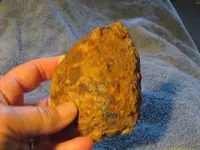
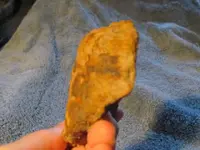
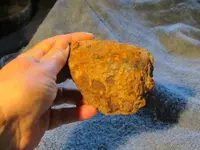 Please see the other post for another item found nearby.
Please see the other post for another item found nearby.

 Please see the other post for another item found nearby.
Please see the other post for another item found nearby.


